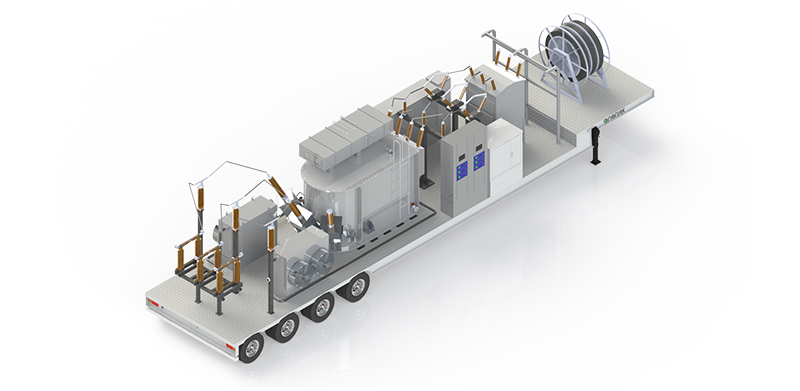Rapid Sustainable Power
A fully-equipped electrical substation, the mobile substation or portable substation is designed to be a multi-purpose package delivering maximum MVA for allowable weight and size. Depending on selected features and configuration, the mobile substation can be mounted on one or more semi-trailers. Performance and design criteria vary considerably from those of a conventional substation.
- FEATURES
- APPLICATIONS AND ADVANTAGES
- Circuitry is more complicated to meet a variety of operating situations.
- Mobile substations operate at a higher power density than stationary units, therefore losses are higher. Utilities use a mobile substation only until a suitable stationary unit is obtained.
- Range is from 5MVA up to 60MVA, with voltages no higher than 245KV.
- A typical mobile substation includes the semi-trailer/s, switchgear, breakers, emergency or station power supply, protection and control, a compact high-power-density transformer and enhanced cooling capability.
- Within existing substations (emergency backup power systems)
- Refurbishment, maintenance or repair of existing substations
- Equipment failure for substations without spare capacity
- Power supply during main equipment failure or natural disasters (fire, flood, transmission line freeze) when quick replacement is not available
- Standby supply for peak loads in areas where power demand expands further than the planned increase in main system capacity (backup electrical power systems)
- Power supply while a permanent substation is under construction, which could take two to three years (temporary service)
- Primary power supply in isolated areas (new service)
- Rapid deployment and completion within six to eight months
- A “plug-and-play” solution that is quickly assembled onsite and ready to perform within a few hours
- A compact design that does not require special civil works
- Up to a 60% smaller footprint than a conventional substation
- Compliance with ANSI or IEC standards








